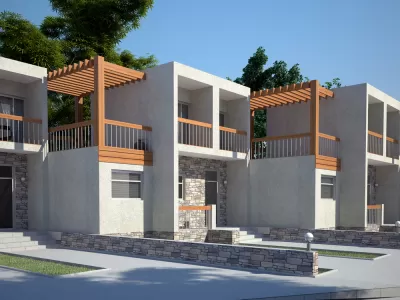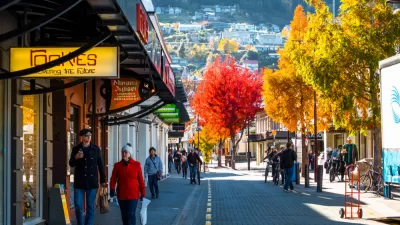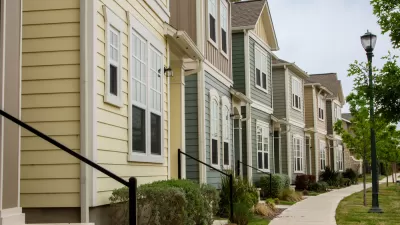To fix the housing crisis, cities should focus on "missing middle housing" and multi-family development.

Jake Bullinger, in a piece for In These Times, assesses some of the upzoning programs being implemented by many cities in the American West as they struggle to get a handle on the growing housing affordability crisis.
The "regulatory and economic cocktail" that leads developers to "go big and expensive" and prevents multi-unit development near major job centers, writes Bullinger, has led to huge imbalances in housing availability and cost. "In some areas of California, for instance, new jobs have outnumbered new homes 12 to 1." Restrictive single-family zoning policies, the kind that cities across the country are currently reevaluating, have stifled new housing construction and deepened the crisis by preventing mid- and high-density development in some of the most resource-rich parts of cities.
"In an efficient market, developers would build apartments where land is expensive and rent is high — the developer gets more revenue-generating units per parcel, and renters get the option of smaller, less-expensive housing. But that hasn’t been the case in California: nine of the state’s 12 most expensive cities permitted zero multifamily units between 2013 and 2017." With the need for more housing options growing every day, says Bullinger, "a corner-lot fourplex on every block could go a long way."
FULL STORY: Towns Across the West Face a Housing Crisis. More Sprawl Is Not the Answer.

Manufactured Crisis: Losing the Nation’s Largest Source of Unsubsidized Affordable Housing
Manufactured housing communities have long been an affordable housing option for millions of people living in the U.S., but that affordability is disappearing rapidly. How did we get here?

Americans May Be Stuck — But Why?
Americans are moving a lot less than they once did, and that is a problem. While Yoni Applebaum, in his highly-publicized article Stuck, gets the reasons badly wrong, it's still important to ask: why are we moving so much less than before?

Research Shows More Roads = More Driving
A national study shows, once again, that increasing road supply induces additional vehicle travel, particularly over the long run.

Which US Rail Agencies Are Buying Zero-Emissions Trains?
U.S. rail agencies are slowly making the shift to zero-emissions trains, which can travel longer distances without refueling and reduce air pollution.

San Diego School District Approves Affordable Housing Plan
The district plans to build workforce housing for 10 percent of its employees in the next decade and explore other ways to contribute to housing development.

Lawsuit Aims to Stop NYC’s ‘City of Yes’ Zoning Reforms
A lawsuit brought by local lawmakers and community groups claims the plan failed to conduct a comprehensive environmental review.
Urban Design for Planners 1: Software Tools
This six-course series explores essential urban design concepts using open source software and equips planners with the tools they need to participate fully in the urban design process.
Planning for Universal Design
Learn the tools for implementing Universal Design in planning regulations.
City of Moreno Valley
Institute for Housing and Urban Development Studies (IHS)
City of Grandview
Harvard GSD Executive Education
NYU Wagner Graduate School of Public Service
City of Cambridge, Maryland
Newport County Development Council: Connect Greater Newport





























